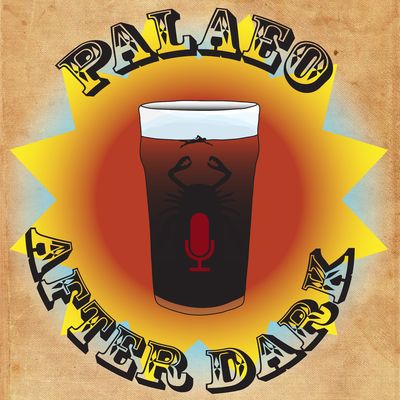A group of scientists have biweekly informal discussions about evolutionary biology and palaeontology... over beer.
http://www.palaeoafterdark.com
Podcast 162 - Turtle Power
The gang discusses a few papers that look at the evolutionary history, biogeography, and life habit of Mesozoic turtles. Specifically, they look at a paper about a stem turtle with interesting information about the evolutionary history of turtle morphology, a paper on a special fossil of a marine turtle with exceptionally preserved eggs, and a paper that investigates the biogeographic history of turtles. Basically, its a whole lotta turtles! Meanwhile, James resurrects some old arguments, Curt revisits cherished film scenes, and Amanda has a new obsession.
Up-Goer Five (James Edition):
The group look at two papers that are looking at animals with four legs and hard parts on the outside that they can hide in. These things are found on land with legs and in the water with water legs that they use for being not on land. This is a very long set of words, so we will call them hard boys.
The first paper is looking at a hard boy that was full of little round things that would become babies. This is the second hard boy to be found with almost babies and can tell us whether hard boys had lots of babies or not a lot of babies. Hard boys that are in the water usually have a lot of babies that are not expected to live very long; this long dead hard boy actually had not many babies, so although it lived in the water it expected its babies to live.
The second paper is looking at where hard boys lived in the past and how they got to be where they are today. The paper shows that hard boys started in one place that was very big and that they stayed on it as it broke up over time. As it broke up they also moved between the bits, so the hard boys were able to move between the bits even though they are usually slow. They keep doing this until the bits get too far from each other to let the hard boys move across.
References:
Li, Chun, et al. "A Triassic stem turtle with an edentulous beak." Nature560.7719 (2018): 476.
Ferreira, Gabriel S., et al. "Phylogeny, biogeography and diversification patterns of side-necked turtles (Testudines: Pleurodira)." Royal Society open science 5.3 (2018): 171773.
Cadena, Edwin‐Alberto, et al. "A gravid fossil turtle from the Early Cretaceous reveals a different egg development strategy to that of extant marine turtles." Palaeontology (2018).
